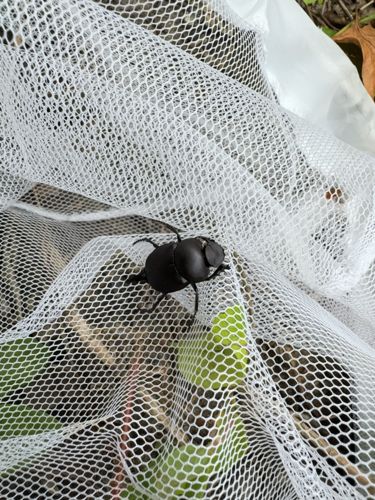Dung Beetle (likely Earth-boring Dung Beetle)
Scientific Name: Likely within the genus Geotrupes or a related genus such as Phanaeus or Copris, but a precise species identification is not possible from this image alone. A general family identification of Scarabaeidae is more accurate.
Order & Family: Order: Coleoptera; Family: Scarabaeidae (specifically likely within the subfamily Geotrupinae or Scarabaeinae, given the appearance)
Size: Typically ranges from 5 mm to 30 mm in length, though some larger tropical species can exceed 50 mm. The one in the image appears to be in the average range.

Natural Habitat
Found in various habitats worldwide where mammalian dung is present, including grasslands, forests, farmlands, and savannas. They prefer habitats with sufficient soil for burrowing.
Diet & Feeding
Strictly dung (feces) of herbivores and omnivores. They are detritivores, playing a crucial role in nutrient cycling.
Behavior Patterns
Dung beetles are known for their distinctive behavior of rolling dung into balls, which they then bury either for consumption or as a place to lay their eggs. Some species, called tunnelers, bury dung directly underground, while others, known as dwellers, live within the dung pile itself. They are primarily nocturnal or crepuscular. The buried dung serves as a food source for both adults and larvae, and the dung ball also protects the larvae during their development.
Risks & Benefits
Benefits: Dung beetles are extremely beneficial to ecosystems. They aid in nutrient recycling and soil aeration by burying dung, which improves soil structure and fertility. This also helps control fly populations by removing breeding material and reduces parasite transmission in livestock. They are considered bioindicators of ecosystem health. Risks: Generally, dung beetles pose no direct risks to humans. While some species might be considered agricultural pests if they bury too much beneficial dung on pastures (a very minor issue compared to their benefits), their overall impact is overwhelmingly positive.
Identified on: 8/12/2025